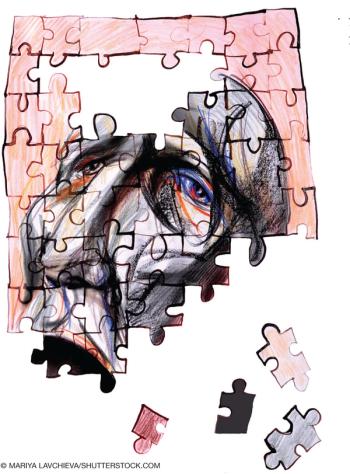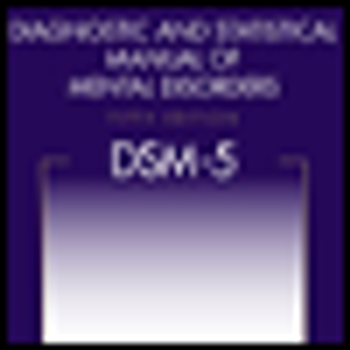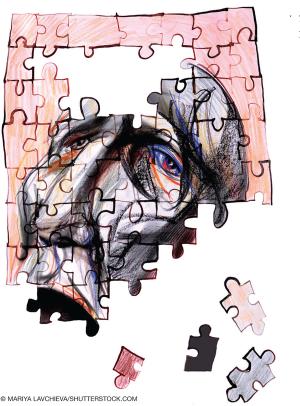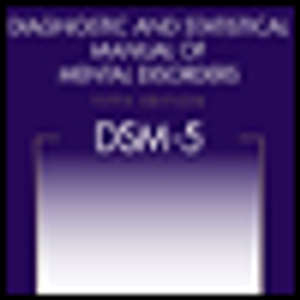
Despite the efforts of a dedicated Work Group, DSM-5 has not significantly changed the problems with PTSD that beset DSM-IV.

Despite the efforts of a dedicated Work Group, DSM-5 has not significantly changed the problems with PTSD that beset DSM-IV.

With DSM-5 now approved, all discussion has been removed from the DSM-5 Web site. According to the APA, the DSM-5 leadership moved to dimensional measures as one solution to the validity problem.

A recent case has caused a flurry of opposing opinions. Not surprisingly, transgender advocacy groups have praised the judge's decision that the inmate in question has an eighth amendment right requiring the state to support and pay for sex reassignment surgery.

With DSM-5 scheduled for publication a little more than a year from now, we may safely assume that, barring unannounced surprises from, say, the APA Scientific Review Committee, what we will see on the DSM-5 Web site is what we will get. With that in mind it’s time to review what we will indeed get.

Both the DSM-5 Web site and Psychiatry News have recently heralded the proposed DSM-5 revision for diagnosis of personality disorders.

Regretfully, if we are to judge the progress of DSM-5 by the incoherence of a recent commentary by the Chair and Vice-chair of the DSM-5 Task Force, we have a lot to worry about.

DSM-II was published in 1968. DSM-5 will be published in 2013. How much progress have we made? I propose that we approach this question with a quiz.

The NIMH Research Domain Criteria (RDoC) project raises many questions about DSM-5 and future DSMs.

In my previous blog, The Missing Person in the DSM, I questioned whether the DSM diagnostic manual classifies psychiatric disorders or the individuals suffering from diagnostic disorders-Ms Smith’s bipolar disorder, or Ms Smith, a person with bipolar disorder.

Here’s a question. As you sit across from your patient, what or whom are you treating: Ms Smith’s bipolar illness, or Ms Smith, a person with bipolar illness? The DSM leans toward the first choice.

The DSM does and must involve both science and pragmatism. It must use the science that is available, but it must also make countless judgment calls that are not grounded in solid empirical evidence-and surely it makes sense to consider practical consequences in doing the latter.

The project culminating in the 2 issues of the Bulletin of the Association for the Advancement of Philosophy and Psychiatry (the Bulletin) included in PDF format with this introduction has its own history.

In a recent issue of Psychiatric News, members of the DSM-5 Task Force reported on the dimensional measures being considered for DSM-5. These take 2 forms: severity scales for individual disorders, and “cross-cutting” measures that cut across disorders. For this brief piece, I will focus on the latter, the more interesting and controversial of the proposed dimensions.

In his ongoing critique of the DSM-5 process, Dr Allen Frances started a brushfire recently in challenging the DSM-5 Mood Disorders Work Group proposal to remove the bereavement exclusion from the diagnostic criteria for a major depressive episode. Here’s a summary of the debate.

Any effort to develop a diagnostic manual for world-wide use must grapple with the question of cross-cultural applicability. The description and diagnostic criteria for schizophrenia must work as well in East Timor as in the US or France. In this piece I choose PTSD to show the complexity of the cultural issue for DSM-5.

The limited empirical research evidence supports the impression that practitioners, if they use the manuals at all, use them in a loose, informal manner and are comfortable ignoring diagnostic criteria and making their diagnoses following an informal prototypal pattern.

Published: September 25th 2015 | Updated:

Published: July 2nd 2010 | Updated:

Published: October 19th 2010 | Updated:

Published: November 4th 2010 | Updated:

Published: November 18th 2010 | Updated:

Published: December 22nd 2010 | Updated: